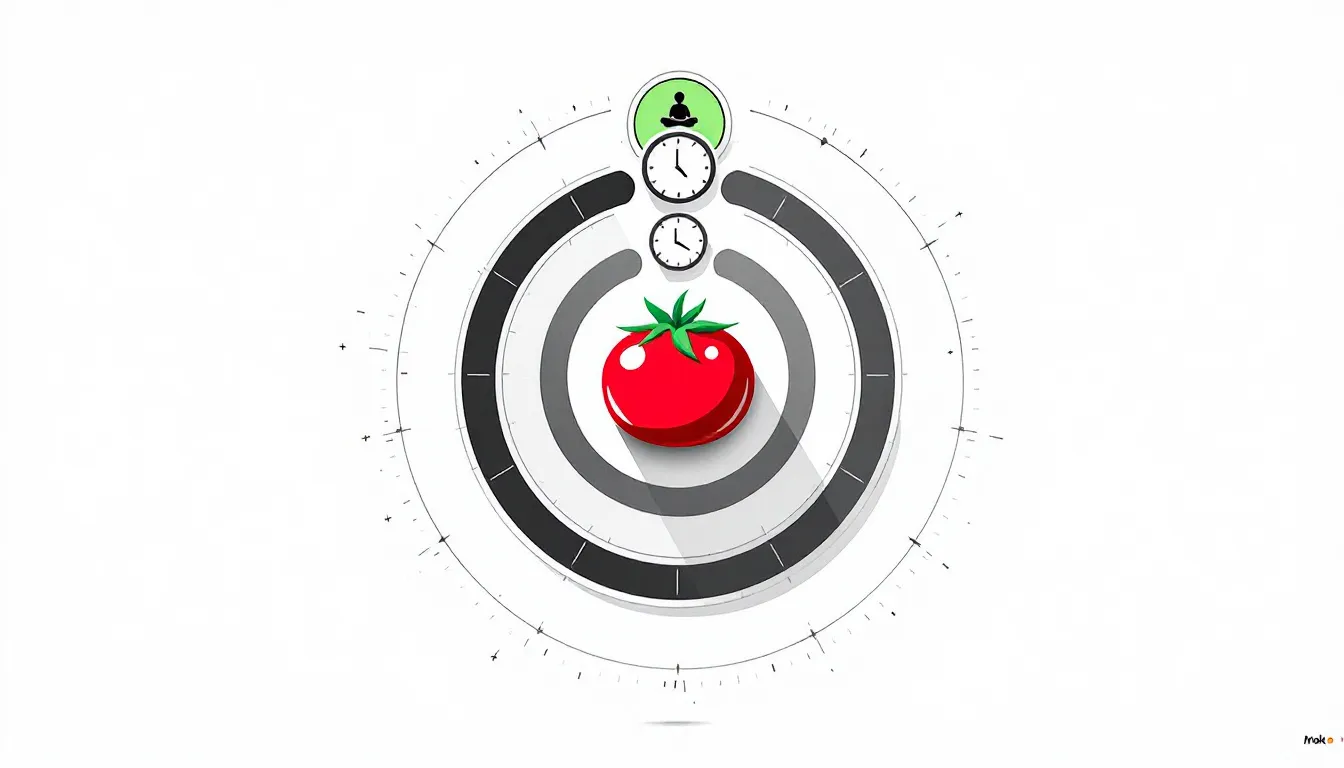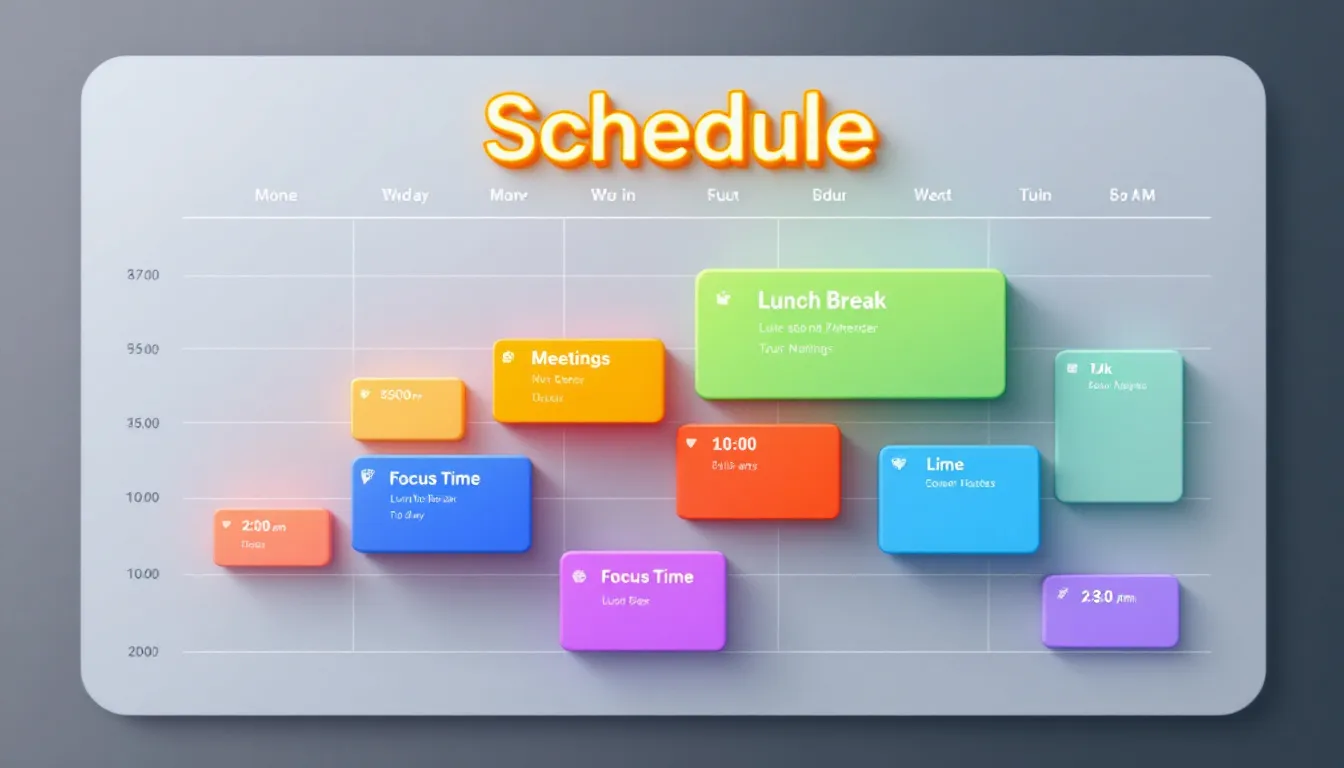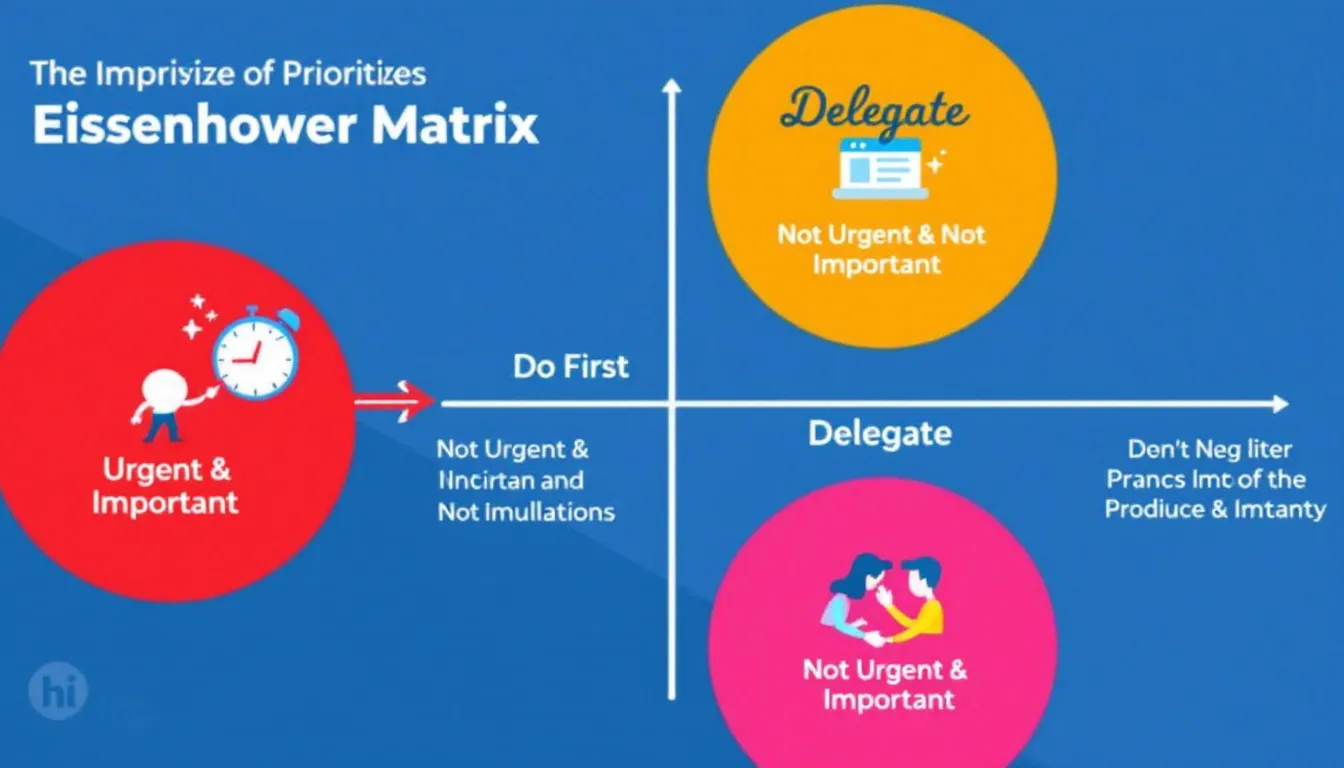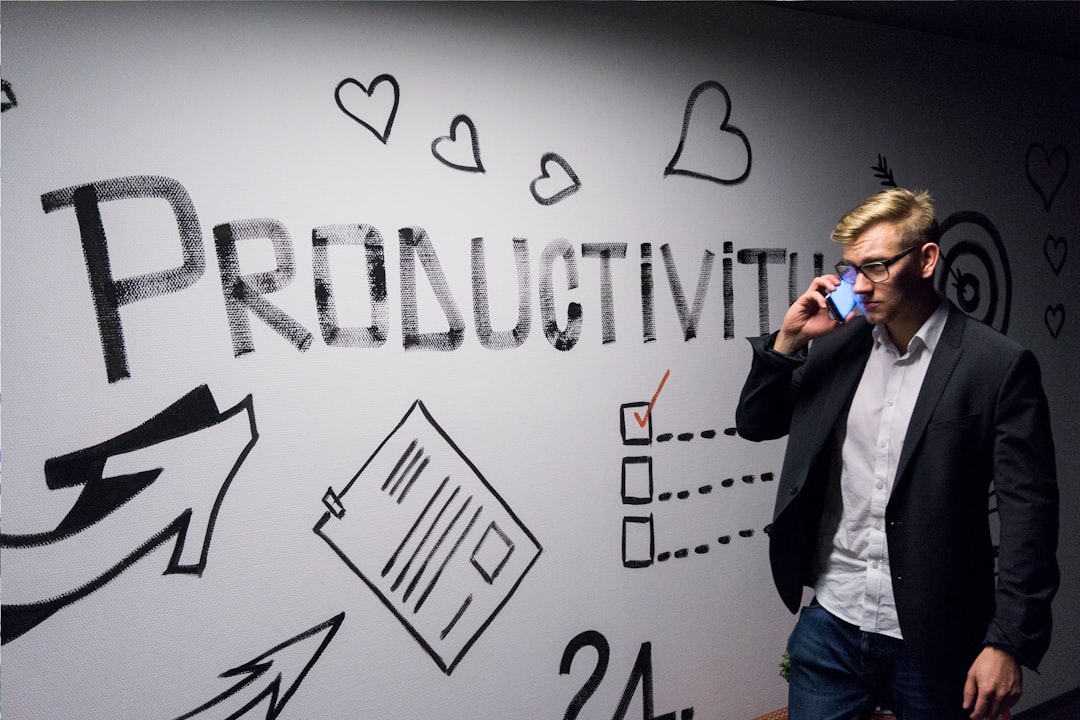8 Best Productivity Techniques to Boost Your Efficiency
Looking to make the most out of your time? Productivity techniques are here to help. These methods can improve how you manage tasks and boost efficiency. In this article, we’ll explore nine powerful productivity techniques to help you achieve more with less effort. Maintaining a to do list is crucial as it helps in organizing priorities and increasing productivity.
Key Takeaways
- Align your productivity techniques with your personal work habits and biological prime time for maximum efficiency.
- Implement structured methods like Pomodoro or ‘Eat the Frog’ to tackle tasks effectively, reduce procrastination, and boost motivation. Incorporate a to do list to identify key tasks and prioritize them.
- Utilize flexible systems such as Time Blocking or Personal Kanban to organize your schedule, prioritize tasks, and maintain a healthy work-life balance.
Finding Your Perfect Productivity Technique

Understanding your work habits can significantly influence which productivity method suits you best. Whether you thrive in the early morning or late at night, aligning tasks with your biological prime time enhances focus and energy. This alignment ensures that you’re working when you have the most energy and motivation throughout the day.
Evaluating your commitments and time allocation is key to finding the right productivity technique. Maintaining a to do list can help in evaluating commitments and time allocation, ensuring you prioritize tasks effectively.
Experiment with different powerful productivity methods to find what truly enhances your efficiency. The effectiveness often depends on your ability to stick with and integrate it into your daily routine. While trial and error might seem daunting, it’s the best way to discover what works for you.
The right productivity method will align with your natural rhythms and commitments, aiding in task prioritization and productivity improvement. Whether you prefer structured schedules or a flexible approach, there’s a technique to help you achieve your goals.
Why Productivity Techniques Matter
Why do productivity techniques matter so much in today’s fast-paced world? For starters, they support individuals in managing workloads and improving personal satisfaction. Structured time management techniques combat procrastination and boost confidence, making it easier to tackle tasks head-on.
Conscious planning and time organization lead to greater efficiency in task completion. Knowing exactly what needs to be done and when makes it easier to stay on track and avoid distractions. Maintaining a to do list is crucial in this process, as it helps in organizing priorities and increasing productivity. Effective time management can enhance well-being by reducing stress and enabling goal achievement. After all, there’s nothing quite like the feeling of ticking off completed tasks from your list.
Tracking completed work intervals fosters a sense of achievement, enhancing motivation to continue tasks. This continuous planning, executing, and reviewing loop maintains a steady pace of progress. Productivity methods help individuals prioritize tasks and accomplish more within a limited timeframe. Focusing on what truly matters allows significant strides toward goals.
Productivity techniques are not just about getting more done; they create a balanced, fulfilling work life where you can thrive. They matter because they help manage time, reduce stress, and ultimately, achieve your dreams.
The Pomodoro Technique: Structured Work Sprints

The Pomodoro Technique is a productivity method that involves a structured schedule of uninterrupted work time and scheduled breaks. Named after the tomato-shaped timer used by its creator, Francesco Cirillo, this technique has become a favorite among many professionals. It involves breaking your work into 25-minute focused work sessions, followed by a short break.
These structured work sprints reduce burnout and improve focus by allowing the brain to rest and recharge. The technique works with our psychology to reduce procrastination and helps train the brain to focus for longer periods, especially for those who are easily distracted. Dividing your day into manageable chunks with the Pomodoro Technique makes even the most complex tasks feel more approachable.
A key element of the Pomodoro Technique is the short break, typically 5 to 10 minutes long, following each 25-minute work session. After completing 3-5 Pomodoro cycles, a longer break allows for deeper rest and recovery, maintaining high productivity throughout the day.
Although short breaks can sometimes disrupt workflow, the Pomodoro Technique helps estimate task durations by determining the number of Pomodoro cycles required. This insight is particularly beneficial for software engineers and writers who often work on complex, long-term projects. Overall, the Pomodoro Technique is a powerful productivity method that significantly improves time management and focus.
Eat the Frog: Tackling the Most Challenging Task First
The concept of “Eat the Frog” encourages individuals to complete their most challenging tasks first, helping to prevent procrastination. This method, popularized by Brian Tracy, is based on the idea that if you tackle the hardest task of the day first, everything else will seem easier in comparison.
Completing the hardest individual tasks first cultivates a positive mindset and boosts motivation throughout the day. This approach helps prioritize tasks effectively and improves overall time management skills, making it an important task that sets you up for a successful and productive day.
The “Eat the Frog” technique builds confidence and helps achieve goals. Identifying ‘frog’ tasks involves recognizing those that are important but not urgent, yet have significant impacts. While the approach can be too rigid for some, it is a powerful method for those who struggle with procrastination and need a clear focus.
For tasks that take multiple days in the “Eat the Frog” method, divide one task into steps and make the first step your ‘frog’ for the day. This ensures that even large tasks are tackled systematically, leading to consistent progress.
Time Blocking: Organize Your Day Effectively

Time blocking involves setting aside specific periods in your calendar to focus on particular tasks. The main idea behind time blocking is breaking the day into focused time blocks for specific tasks, allowing you to gain control over your schedule. This method is particularly beneficial for those managing multiple tasks and priorities, such as freelancers or calendar-based workers.
Grouping similar tasks together in a time block minimizes distractions and improves focus. This approach is especially useful for those who multitask or are easily distracted. The Pomodoro Technique can enhance time management by promoting intentional work bursts and reducing wasted time.
Time blocking helps avoid overcommitting to tasks and meetings. When the allocated time for a task ends, move to the next task, even if the previous one is unfinished. This discipline ensures your day is organized effectively, promoting a balanced workload.
At the end of each day, reflect on your accomplishments and prepare for the next day’s time blocks. This daily reflection helps understand time utilization and ensures continuous productivity improvement. Time blocking encourages allocating time for breaks and personal activities, promoting overall well-being.
Getting Things Done (GTD): A Comprehensive System
The Getting Things Done (GTD) method, developed by David Allen, is a comprehensive productivity system for busy people overwhelmed by tasks. The GTD technique involves five steps: capture, clarify, organize, reflect, and engage, ensuring every idea and task is captured and processed systematically.
The GTD technique involves five steps:
- Capture
- Clarify
- Organize
- Reflect
- Engage
This comprehensive productivity system developed ensures every basic idea and task is captured and processed systematically.
GTD encourages embracing ideas and fitting them into your schedule, reducing the stress of task management. For those who chase too many opportunities, GTD offers a structured system to focus on and finish tasks.
One challenge with GTD is that making a huge task list and to do lists can quickly overwhelm you with tasks. Although GTD can seem complex at first, it ultimately simplifies task management by organizing thoughts and actions. This method can be used alongside other productivity techniques, enhancing overall efficiency.
Focusing on actionable steps and organizing tasks, GTD helps achieve goals and improve productivity. Whether managing big projects or daily tasks, the GTD method offers a structured and effective approach to time management.
Don’t Break the Chain: Building Consistency
The “Don’t Break the Chain” method, popularized by Jerry Seinfeld, focuses on daily habit tracking through visual reminders. This technique uses a wall calendar to mark progress with ‘x’s for each completed task, motivating individuals to stick to their habits and reinforcing commitment.
This method emphasizes focusing on the process rather than the outcome, reducing pressure on performance. By choosing manageable tasks, you sustain the effectiveness of the “Don’t Break the Chain” method and build consistency.
Consistency in small tasks through this method can lead to significant long-term achievements. To maintain focus and build new habits allows steady progress toward goals. This method is particularly useful for those who struggle with regular habits and need a visual reminder to stay on track.
Zen to Done: Simplifying Your Workflow
The Zen to Done (ZTD) method, developed in response to the complexity of traditional productivity systems, consists of ten core habits that streamline productivity. ZTD integrates Zen philosophy principles, emphasizing clarity and calmness. Users are encouraged to adopt one habit at a time for better integration.
Each productivity habit from the Zen to Done method should be tried for 30 days, focusing on establishing each habit over a month. This approach reduces stress by promoting an organized and decluttered workflow.
Zen to Done encourages focusing on the Most Important Tasks to improve productivity. The system promotes regular reviews to assess goals and progress, ensuring continuous improvement. Simplifying your workflow and adopting a more mindful approach helps achieve a balanced and productive work life.
The Eisenhower Matrix: Prioritizing Important Tasks

The Eisenhower Matrix categorizes tasks into four areas: those to do immediately, those to schedule, those to delegate, and those to eliminate. Quadrant one is for tasks that are both urgent and important, requiring immediate action. Quadrant two includes important but not urgent tasks, allowing for planning and scheduling.
Color coding tasks can help visualize priorities within the Eisenhower Matrix, making it easier to manage different tasks. This method helps prioritize important tasks and manage time effectively. Focusing on what truly matters allows you to achieve a balanced and productive work life.
Personal Kanban: Visual Task Management
The concept of Personal Kanban, introduced in a 2011 book by Jim Benson and Tonianne DeMaria Barry, aims to enhance productivity by visualizing tasks and limiting work in progress. Using physical boards or software, individuals can create a visual layout of their tasks to improve focus and organization.
Tasks can be prioritized visually in Personal Kanban by labeling them with different priority levels. Flexibility allows users to adapt their boards by adding new categories or adjusting task limits. This method is particularly useful for visual people who need a clear and adaptable system for managing tasks.
Summary
Summarize the key points of each productivity technique, emphasizing the importance of experimenting to find the right method. Highlight the benefits of improved productivity and how each method can help in managing tasks and achieving goals. Mention the importance of maintaining a to do list as part of these productivity techniques. End with an inspiring note encouraging readers to take action and unlock their full potential.
Frequently Asked Questions
How do I know which productivity method is right for me?
The right productivity method for you is the one that aligns with your work style and energizes your routine. Embrace experimentation to discover what enhances your efficiency and keeps you motivated!
What is the Pomodoro Technique and how does it work?
The Pomodoro Technique is a powerful time management method that uses 25-minute focused work sessions, followed by short breaks, to boost concentration and reduce burnout. Embrace this technique to enhance your productivity and make tasks feel more manageable!
How can “Eat the Frog” help with procrastination?
“Eat the Frog” helps combat procrastination by urging you to tackle your toughest task first thing in the morning, which boosts your motivation and energizes your day. Start strong and watch your productivity soar!
What are the benefits of time blocking?
Time blocking is a game-changer for your productivity! By organizing your day into dedicated time slots for specific tasks, you boost your focus, minimize distractions, and make room for essential breaks and personal activities. Embrace this technique to unlock your potential!
Can I combine different productivity techniques?
Absolutely, you can combine different productivity techniques to tailor a system that works best for you! Mixing methods like the Pomodoro Technique with GTD or Personal Kanban can significantly boost your efficiency.
